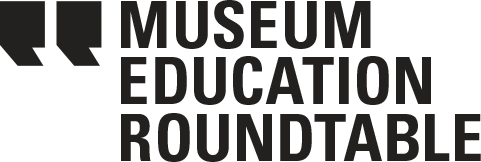Making a (Museum Book) List, Checking It Twice
‘Tis the season for holiday shopping lists! And who doesn’t love to curl up in front of the fireplace with a good read around the holidays? Keeping these two things in mind, the Board of Directors at the Museum Education Roundtable have some recommendations for the museum-centric bookworms in your life. Perhaps one or two of the books on this list will even make their way onto your own wish list this season. Either way, we’re here to help with some juicy reviews!
Anarchist’s Guide to Historic House Museums by Frank D. Vagnone & Deborah E. Ryan
As the “lit bomb” glyph on the cover suggests, Vagnone and Ryan want to explode our understanding of what historic house museums (HHM) are, who they are for, and what role they play in their communities. While the book is a pointed critique of the shortcomings of the traditional HHM model, it also presents a step-by-step methodology that HHM staff can apply in reimagining and realigning their mission and work to be more relevant to contemporary audiences
The Art of Relevance by Nina Simon
A fast, highly readable book much in the style of Simon’s blog and previous book. Many of the ideas that she discusses are concepts that museum educators can utilize to push change forward within their own institutions. She frames her thoughts with great imagery that can be helpful when you find yourself trying to convince funders, or other members of your museum, to try something new.
Creating the Visitor-Centered Museum by Peter Samis and Mimi Michaelson
This book is so hot-off-the-presses, we haven’t read it yet! But it’s on OUR holiday wish list. From Amazon: “Samis and Michaelson thoughtfully explore the changing attitudes towards museum visitors and the tensions between traditional, old-guard mindsets and newer, audience-focuses approaches” – Dana Mitroff Silvers, Designing Insights
Creativity in Museum Practice by Linda Norris and Rainey Tisdale
This book demystifies creativity and provides some practical tools for tapping into your own creativity.
How to Be an Explorer of the World (Portable Life Museum) by Keri Smith
This isn’t a new book, but it is a perennial favorite. When I’m feeling bogged down by the ‘gotta-do’s’ I like to take a few minutes to flip through the pages and refresh my curiosity and inspiration, things which got me into the field in the first place. I also used it when working in an art museum as a way to get people to experience and think about what they were seeing around them in a different way.
Identity and the Museum Visitor Experience by John Falk
Another perennial resource, this book is a resource that I consistently return to when thinking about our audiences and how to train our staff. We’ve also used it when conducting visitor evaluation studies in the museum. It’s a cornerstone in any museum studies book collection.
Institutional Trauma: Major Change in Museums and Its Effects on Staff edited by Elaine Heumann Gurian
The title may not sound inviting, but the content is absolutely pertinent. Perhaps your museum moved to a new location; perhaps there was a natural disaster in your city; perhaps there were a couple of years of fiscal turbulence; perhaps there was a boon in funding and your museum is growing quickly. No matter the shift, change is hard. This book is a primer for how to help staff work their way through periods of transition.
Living History: Effective Costumed Interpretation and Enactment at Museums and Historic Sites by David Allison
This book is an interesting look at the development of costumed interpretation in museums, with some intriguing case studies. The last chapter, which includes a look at the way museums, historic sites, and interpreters are portrayed in popular media, may be the most insightful. I’ve been paying a lot more attention to how museums are portrayed in media since reading this book, which was not the book’s central theme, but it was my favorite take-away.
The Museum of Lost Wonder by Jeff Hoke
A whimsical, beautiful, imaginative book that is equal parts: hands-on, based in mythology and history, rooted in philosophy, and laced with humor. It is particularly useful for reigniting curiosity, wonderment, and a sense of joy with regard to learning.
Something Incredibly Wonderful Happens: Frank Oppenheimer and His Astonishing Exploratorium by K.C. Cole
I am a sucker for a good biography. I’m hooked when a biography includes the Manhattan Project, a blacklisted scientist, a respite of cattle farming, and the emergence of a natural-born teacher. Cole leads you through the arc of Frank Oppenheimer’s lifetime. Along the way the threads of science, education, curiosity and passion weave together in the form of a new kind of science museum.
Wishing you and yours a peaceful and joyful (and book-filled) holiday season!
Lexie Carlson is the Program Manager for the Teacher Institute (TI) at the Exploratorium in San Francisco, California. TI provides hands-on, inquiry-based, professional development for middle and high school science teachers.
Opening photo credit: Elisabeth Nevins

